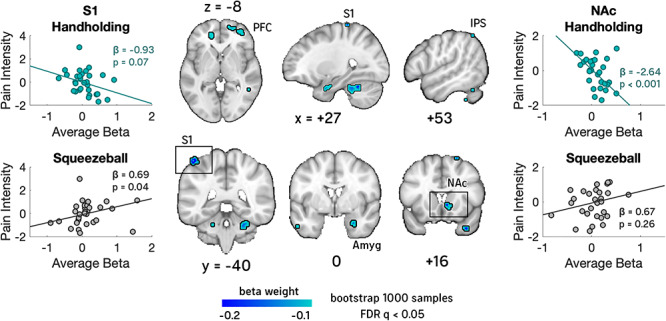Fig. 6.

Brain regions that predict decreased pain self-reports during handholding. Two robust regressions were fit on data from Study 2. In one, brain activity during Handholding was predicted by individual differences in pain intensity ratings during Handholding. In the second, brain activity during the Squeeze ball control was predicted by individual differences in pain intensity ratings during the control. We compared the slopes of these two regressions to test where brain activity was significantly more predictive of pain during Handholding. This analysis revealed negative correlations with pain during Handholding—indicative of pain-regulation or other competing processes—in the right nucleus accumbens (NAc)/ventral striatum, bilateral primary somatosensory cortex (S1), amygdala (Amyg), right inferior parietal sulcus (IPS) and medial PFC. NAc and medial PFC have all been associated with pain valuation and meaning, amygdala with pain affect and somatosensory cortex with social touch-related pain reduction in previous studies. Breakout scatter plots of select ROIs are pictured for descriptive purposes only.
